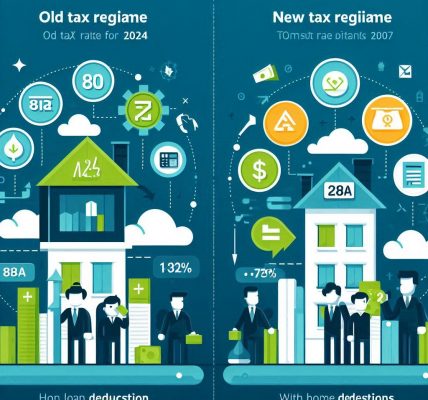Medical expenses are an inevitable part of life, and sometimes they can take a significant toll on your finances. However, the good news is that under the Indian tax laws, you can claim relief on certain medical expenses and treatments. Taxpayers can avail themselves of deductions that help reduce the burden of medical costs, all while ensuring that they comply with the provisions set out by the Income Tax Act.
In this blog, we’ll walk you through the different tax relief options available for medical expenses and treatments, highlighting the key sections that can help you save on taxes.
1. Section 80D: Deduction for Health Insurance Premiums
Health insurance is one of the most effective ways to manage medical expenses. Under Section 80D of the Income Tax Act, individuals can claim deductions for premiums paid towards health insurance policies for themselves, their spouses, children, and parents.
What Can You Claim?
- Self, Spouse, and Children: You can claim up to ₹25,000 for insurance premiums paid for yourself, your spouse, and dependent children.
- Senior Citizens: If your parents are senior citizens (60 years or older), you can claim a deduction of up to ₹50,000 for premiums paid for their health insurance. If they are not senior citizens, the limit is ₹25,000.
How Does This Help You Save Taxes?
This deduction is available irrespective of whether the medical treatment is availed or not. It’s an easy way to reduce your taxable income while also safeguarding your health.
2. Section 80DDB: Deduction for Medical Treatment of Specified Diseases
Under Section 80DDB, you can claim deductions for the treatment of certain specified diseases. This provision is primarily for taxpayers who have themselves, or their family members, suffering from serious ailments like cancer, neurological disorders, or renal failure.
What Can You Claim?
- For Self or Family Members: A deduction of ₹40,000 can be claimed for medical treatment of specified diseases.
- Senior Citizens: If the treatment is for a senior citizen (above 60 years), the limit increases to ₹1,00,000.
- Diseases Covered: Cancer, chronic renal failure, neurological diseases, Parkinson’s, Alzheimer’s, etc.
How Does This Help You Save Taxes?
This deduction ensures that you get financial relief in case of medical emergencies related to chronic and life-threatening illnesses, thus lowering your tax liability.
3. Section 80E: Deduction for Treatment of Disability
If you or your dependent family member has a disability, Section 80E allows you to claim deductions for the medical treatment expenses. This is primarily for individuals with a disability that meets the criteria defined by the government.
What Can You Claim?
- For Disability Treatment: You can claim a deduction for medical treatment and rehabilitation, which helps reduce your taxable income.
- Amount Deductible: The deduction amount varies depending on the nature and severity of the disability.
How Does This Help You Save Taxes?
This provision ensures that people with disabilities, or those who are caregivers to a disabled family member, can reduce their taxable income, giving them financial relief during tough times.
4. Section 10(14): Medical Allowance
If you are receiving medical allowance from your employer, it may be exempt from tax, under certain conditions. Employees can avail of this allowance to cover medical expenses, provided they meet the criteria established by the employer.
What Can You Claim?
- Medical Reimbursement: Employers can reimburse medical expenses up to a certain limit without it being taxable, provided you submit receipts and bills for the same.
- Amount Exempt: The amount is usually exempt up to ₹15,000 per annum.
How Does This Help You Save Taxes?
Medical allowance is a great way to reduce taxable income, as it is tax-free up to the mentioned limit, providing significant savings on medical-related expenditures.
5. Section 24(b): Deduction for Home Loan Interest for Medical Treatment
While this section is typically used for claiming home loan interest, it can also be applied for medical expenses under certain circumstances. If a person uses a portion of a home loan for medical treatments, they may be eligible for deductions under Section 24(b).
What Can You Claim?
- Interest on Home Loan: You can claim a deduction of up to ₹2,00,000 per year for interest paid on home loans. If the loan was used to cover medical expenses, this deduction applies.
How Does This Help You Save Taxes?
This deduction can help reduce your overall tax burden by utilizing your home loan interest paid for medical expenses, creating an additional avenue to claim relief.
6. Medical Expenses for Preventive Care
While there’s no direct deduction for preventive care under the Income Tax Act, taxpayers who spend on preventive health check-ups and wellness treatments may benefit indirectly. For example, premiums paid for health insurance plans that cover preventive check-ups can be claimed under Section 80D.
7. How to Claim These Tax Deductions
To claim these deductions, ensure that you have the following documents:
- Health Insurance Premium Receipts: To claim deductions under Section 80D.
- Medical Bills and Prescriptions: For deductions under Sections 80DDB and 80E.
- Medical Allowance Receipts: Submit your medical allowance receipts to your employer.
- Home Loan Interest Statements: For deductions related to medical treatment under Section 24(b).
Always ensure that you file your tax returns accurately, using the appropriate forms and documentation, to claim all the possible medical-related tax reliefs.
Conclusion
Medical expenses can often be unpredictable, but the tax benefits available under various sections of the Income Tax Act can offer significant relief. By understanding the different deductions and tax-saving provisions for medical expenses and treatments, you can reduce your tax burden while managing your healthcare needs. Whether it’s health insurance premiums, treatment for specific diseases, or medical allowances, there are multiple avenues to help you save on taxes.




